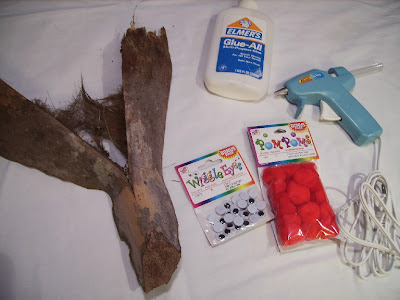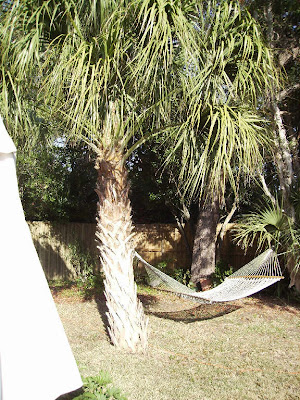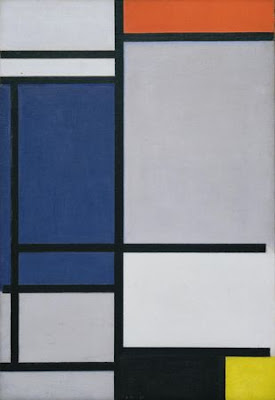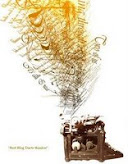 Merry Christmas Eve! This is the last project before Christmas so enjoy. Paint a few of these while you’re baking other cookies for a little edible art.
Merry Christmas Eve! This is the last project before Christmas so enjoy. Paint a few of these while you’re baking other cookies for a little edible art. Sugar Cookie Dough
Rolling Pin
Parchment Paper
Cookie Cutter
Light Corn Syrup
Food Coloring
Paintbrushes
Small Cups
 Bake your sugar cookies according the direction on the package. You can, instead, use your own recipe or buy undecorated sugar cookies already made from the grocery store. If you bake your own, let them cool completely before painting on them.
Bake your sugar cookies according the direction on the package. You can, instead, use your own recipe or buy undecorated sugar cookies already made from the grocery store. If you bake your own, let them cool completely before painting on them. Pour some light corn syrup into several small cups. You’ll want about a teaspoon in each. Squeeze one drop of food coloring into each cup and stir to make your paints. To make the black color I just mixed one drop of each color (and two drops of red) to one of the cups. The other colors are standard food coloring colors.
 Use a clean paintbrush, preferably one that has never been used, and paint your cooled sugar cookies. The paint is very sticky and you must wash the paintbrush in the sink between each color. For this reason, it would be useful to have a different paintbrush for each color.
Use a clean paintbrush, preferably one that has never been used, and paint your cooled sugar cookies. The paint is very sticky and you must wash the paintbrush in the sink between each color. For this reason, it would be useful to have a different paintbrush for each color.Please note that the colors run together if you don’t wait for the paint to dry between each; however, the paint dries extremely slowly. I painted mine all in one sitting and I think they came out fine.
Also note that the Jackson Pollock inspired cookies are very messy to make. Place a cookie on a plate, set it in the sink, and then splatter paint like I did (shown in the picture below). Have a parent help you with this one.
 Below are pictures of my cookie masterpieces, inspired by Frank Lloyd Wright stained-glass windows, Jackson Pollock, and Piet Mondrian. I thought I had posted on Wright stained-glass but I guess not. So below the cookie, notice the inspiration.
Below are pictures of my cookie masterpieces, inspired by Frank Lloyd Wright stained-glass windows, Jackson Pollock, and Piet Mondrian. I thought I had posted on Wright stained-glass but I guess not. So below the cookie, notice the inspiration. 



I think they turned out quite nicely. Use any artist for inspiration or paint your own pictures using the fun recipe.
Return to main page.






 Remove the metal cap from your glass ornament and set it aside. Paint a thin coat of white glue onto the inside of the ornament where you would like the image to appear.
Remove the metal cap from your glass ornament and set it aside. Paint a thin coat of white glue onto the inside of the ornament where you would like the image to appear.
 The image above is Unity Temple. I visited during a hot summer day and was the only person in the building so I was allowed to wander as I pleased. It’s impossible to describe the feeling in that building but I’ll try. There is a spirituality but it is not like that found in most churches. It is not as dark inside because the walls are wood and the stained-glass windows are mostly clear with colored geometrical patterns. Steps can be found in each corner of the chapel and the building exists on three levels, though it feels like only one floor from which you can somehow float upward. Wright designed the pews and light fixtures, as well as the building itself and the stained-glass windows. Below is a picture of the interior.
The image above is Unity Temple. I visited during a hot summer day and was the only person in the building so I was allowed to wander as I pleased. It’s impossible to describe the feeling in that building but I’ll try. There is a spirituality but it is not like that found in most churches. It is not as dark inside because the walls are wood and the stained-glass windows are mostly clear with colored geometrical patterns. Steps can be found in each corner of the chapel and the building exists on three levels, though it feels like only one floor from which you can somehow float upward. Wright designed the pews and light fixtures, as well as the building itself and the stained-glass windows. Below is a picture of the interior. The next few images come from the neighborhoods surrounding Unity Temple and are all Wright-designed homes. The first was Wright’s own home and studio when he lived in Illinois. When I visited, some work was being done to restore the front of the home but you should notice the sculptures above the door. Yep: designed by Frank Lloyd Wright. They’re called “The Bolders.”
The next few images come from the neighborhoods surrounding Unity Temple and are all Wright-designed homes. The first was Wright’s own home and studio when he lived in Illinois. When I visited, some work was being done to restore the front of the home but you should notice the sculptures above the door. Yep: designed by Frank Lloyd Wright. They’re called “The Bolders.” 




 One of the most recognized homes that Wright designed is Falling Water, shown below. Notice how the building seems to fit into the land perfectly. The river actually runs underneath part of the house. Much of the building, as you can see, is made from stones that match those found in the river and the beams are brown like trees that surround the house.
One of the most recognized homes that Wright designed is Falling Water, shown below. Notice how the building seems to fit into the land perfectly. The river actually runs underneath part of the house. Much of the building, as you can see, is made from stones that match those found in the river and the beams are brown like trees that surround the house. Finally, the last picture I’ll show you today is of the Guggenheim Museum in New York City. It spirals out of the ground on the corner of a city block. There is no nature to be found here... or is there. When you step inside it is like entering a seashell. The green glass is the ceiling of the building and the spiraling ramps direct you through the building, beginning at the top and traveling downward.
Finally, the last picture I’ll show you today is of the Guggenheim Museum in New York City. It spirals out of the ground on the corner of a city block. There is no nature to be found here... or is there. When you step inside it is like entering a seashell. The green glass is the ceiling of the building and the spiraling ramps direct you through the building, beginning at the top and traveling downward. I had originally planned to create a Wright-inspired ginger bread house as a project to tie-in to this article but last night on the Food Network someone built Falling Water and that convinced me of how difficult that project would really be. Still, you should check it out if you get a chance. The show will be replayed on Dec. 22 at 6:00pm and Dec. 23 at 3:00pm (Eastern Standard Time). It’s quite impressive.
I had originally planned to create a Wright-inspired ginger bread house as a project to tie-in to this article but last night on the Food Network someone built Falling Water and that convinced me of how difficult that project would really be. Still, you should check it out if you get a chance. The show will be replayed on Dec. 22 at 6:00pm and Dec. 23 at 3:00pm (Eastern Standard Time). It’s quite impressive. I’m not sure why there is white glue and a glue gun in this picture. You could use either so take your pick. Begin by collecting your supplies, including taking a palm frond from a palm tree. If the trees have recently been pruned, you may find the perfect frond on the ground just waiting for you to turn it into a masterpiece. If not, you’ll want an adult to help you retrieve one. Make sure the frond comes from the right kind of palm tree. See the picture below for help. (Yes, that’s my parent’s back yard... lucky, huh?)
I’m not sure why there is white glue and a glue gun in this picture. You could use either so take your pick. Begin by collecting your supplies, including taking a palm frond from a palm tree. If the trees have recently been pruned, you may find the perfect frond on the ground just waiting for you to turn it into a masterpiece. If not, you’ll want an adult to help you retrieve one. Make sure the frond comes from the right kind of palm tree. See the picture below for help. (Yes, that’s my parent’s back yard... lucky, huh?) Attach the goggley eyes and the pom to the palm frond. If you use hot glue you won’t have to wait more than a moment for it to dry but if you use white glue be sure everything is firmly attached before you handle your Rudolph.
Attach the goggley eyes and the pom to the palm frond. If you use hot glue you won’t have to wait more than a moment for it to dry but if you use white glue be sure everything is firmly attached before you handle your Rudolph. If you wish to hang it, hot glue a loop of ribbon to the back. Hang and enjoy!
If you wish to hang it, hot glue a loop of ribbon to the back. Hang and enjoy! Yes, that’s it. Gather your supplies and cover your workspace with newspaper. I chose to use red, green, and white paints and I think my ornament came out well. You can use any colors and glass paint comes in more colors that you can imagine. Silver and gold would be good additions to any ornament. Go crazy!
Yes, that’s it. Gather your supplies and cover your workspace with newspaper. I chose to use red, green, and white paints and I think my ornament came out well. You can use any colors and glass paint comes in more colors that you can imagine. Silver and gold would be good additions to any ornament. Go crazy! A side note: You can use regular craft paint for this project since you won’t be washing the ornament or eat off of it, however, eventually the paint will begin to separate. The ornament pictured below was painted about ten years ago, by my estimation, and you can see that pigment (that is the color) is separating from the binder (the liquid that the color is mixed with to create paint). I still like it though, and hang it on my tree every year.
A side note: You can use regular craft paint for this project since you won’t be washing the ornament or eat off of it, however, eventually the paint will begin to separate. The ornament pictured below was painted about ten years ago, by my estimation, and you can see that pigment (that is the color) is separating from the binder (the liquid that the color is mixed with to create paint). I still like it though, and hang it on my tree every year. Click the following links for a
Click the following links for a  Mondrian soon became interested in cubism. Cubism, which I have not yet posted about, is an artistic style in which the subject is broken into meaningful pieces and rearranged in a new order to show the most important parts of the object. The painting shown below, Still Life with Ginger Pot, was painted by Mondrian in the cubist style. Because of the influence of cubism, Mondrian’s paintings became more and more abstract. Mondrian moved to Paris in 1912 so he could further study cubism.
Mondrian soon became interested in cubism. Cubism, which I have not yet posted about, is an artistic style in which the subject is broken into meaningful pieces and rearranged in a new order to show the most important parts of the object. The painting shown below, Still Life with Ginger Pot, was painted by Mondrian in the cubist style. Because of the influence of cubism, Mondrian’s paintings became more and more abstract. Mondrian moved to Paris in 1912 so he could further study cubism. In 1914 Mondrian returned home just before World War I broke out. He was stuck there for the duration of the war (1914-1919). During this time he became friends with some other artists and together they began the new movement,
In 1914 Mondrian returned home just before World War I broke out. He was stuck there for the duration of the war (1914-1919). During this time he became friends with some other artists and together they began the new movement,  The members of the De Stijl movement were searching to paint an even more honest truth than the cubists. They believed the essence, the foundation of all things could be found in the simplest form: straight lines and primary colors. So Mondrian began painting pieces like the one shown above, Composition.
The members of the De Stijl movement were searching to paint an even more honest truth than the cubists. They believed the essence, the foundation of all things could be found in the simplest form: straight lines and primary colors. So Mondrian began painting pieces like the one shown above, Composition. These ideas were used not only in paintings, but in architecture as well. Look at this house, for instance, designed by Gerrit Rietveld. It is completely black and white with details in primary colors, and uses only rectangles formed by horizontal and vertical lines. The inside also uses simple lines. If you’ve ever seen a Frank Lloyd Wright designed building, you may be thinking that this house reminds you of his work. You’d be right to think that because Wright’s designs from the 1900s and 1910s influenced the later work of these Dutch architects. (You’ll learn about Wright next week.)
These ideas were used not only in paintings, but in architecture as well. Look at this house, for instance, designed by Gerrit Rietveld. It is completely black and white with details in primary colors, and uses only rectangles formed by horizontal and vertical lines. The inside also uses simple lines. If you’ve ever seen a Frank Lloyd Wright designed building, you may be thinking that this house reminds you of his work. You’d be right to think that because Wright’s designs from the 1900s and 1910s influenced the later work of these Dutch architects. (You’ll learn about Wright next week.)


 Wrap the pipe cleaner around the bend in the candy cane. You should complete two wraps and then twist at the top. Bend the pipe cleaner so it looks like antlers. If you have extra length, snip it off.
Wrap the pipe cleaner around the bend in the candy cane. You should complete two wraps and then twist at the top. Bend the pipe cleaner so it looks like antlers. If you have extra length, snip it off.
 Wrap a pipe cleaner twice around the bend in the candy cane. Bend it into the outline of a pointed, red Santa hat. Wrap the second pipe cleaner to fill in the hat. Tuck in the ends. Use a bit of glue to attach the white pom to the end of the hat.
Wrap a pipe cleaner twice around the bend in the candy cane. Bend it into the outline of a pointed, red Santa hat. Wrap the second pipe cleaner to fill in the hat. Tuck in the ends. Use a bit of glue to attach the white pom to the end of the hat. ___________
___________




 Protect your work space with newspaper. Use the cotton balls to wipe the candleholder with rubbing alcohol. Once you have wiped the candleholder, don’t touch the area you intent to paint.
Protect your work space with newspaper. Use the cotton balls to wipe the candleholder with rubbing alcohol. Once you have wiped the candleholder, don’t touch the area you intent to paint. Younger kids will enjoy experimenting freeform on the candle holder. Even just painting dots of red, green, and white is fun.
Younger kids will enjoy experimenting freeform on the candle holder. Even just painting dots of red, green, and white is fun.


 For Matisse, collages were a way he could continue to create art when he fell sick late in his life. He hand-painted pieces of white paper with bold, solid colors and arranged them into pictures. The collages, such as Iccarus shown below, were then used in his book, Jazz.
For Matisse, collages were a way he could continue to create art when he fell sick late in his life. He hand-painted pieces of white paper with bold, solid colors and arranged them into pictures. The collages, such as Iccarus shown below, were then used in his book, Jazz.



